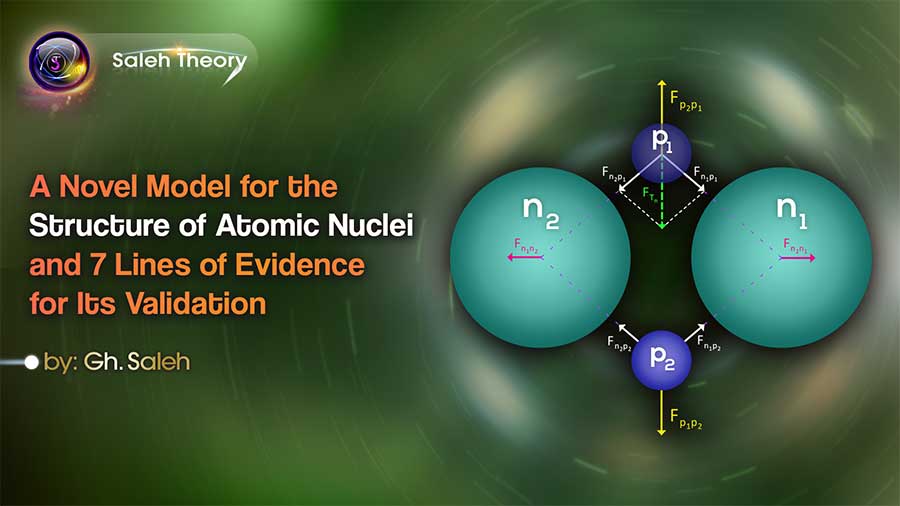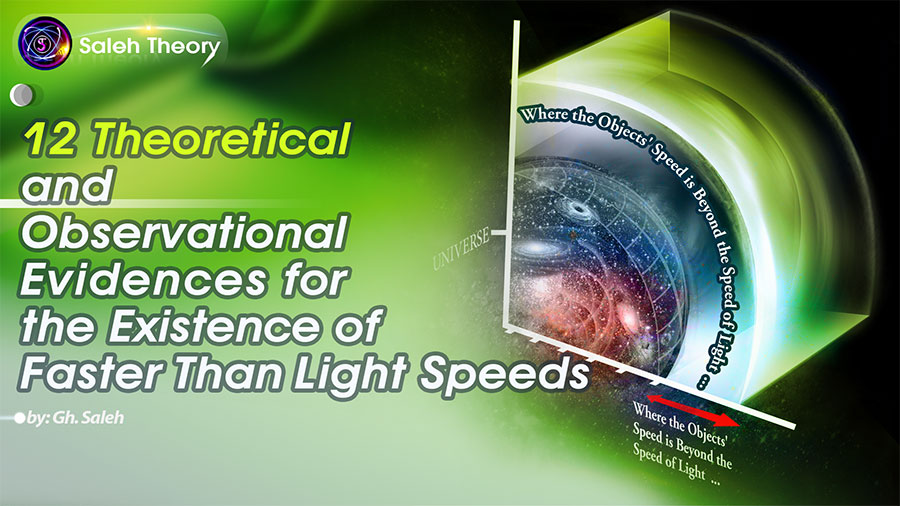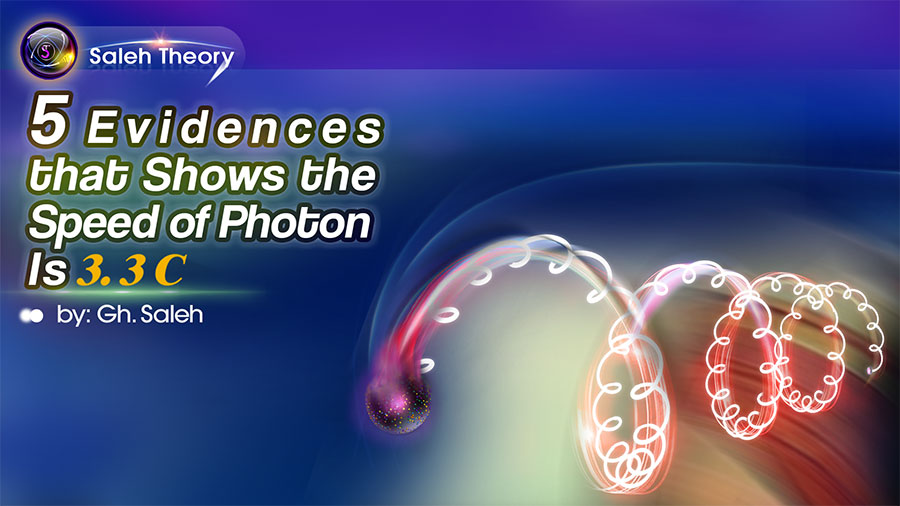
A Novel Model for the Structure of Atomic Nuclei and 7 Lines of Evidence for Its Validation
1. The findings of Saleh Research Group
The Coulomb force is the only force between charged particles that also exists outside the nucleus. The existence of this force has been proven, and its magnitude and other characteristics are well-established. In the article by the Saleh Research Group “ New Discoveries about the Nucleus of Atoms 2 ”, a structure is proposed that is designed by this law. It eliminates the need for additional definitions to cover and describe the realities and properties of elements.
2. The present order in all aspects of existence
If we look at the sky, the order in the solar system, the Milky Way galaxy, and the motions and positions of celestial objects are evident to everyone. This same order can be observed in particles, molecules, atoms, and even their bonds and arrangements. Therefore, the arrangement of subatomic particles within the nucleus requires a specific order, law, and structure that can describe the properties dependent on these nuclei.
3. Comprehensive explanation of the weak nuclear force based on the coulomb force
As explained in the Saleh Research Group article “ Structure of Neutron ”, neutrons are actually the result of a small, dense, heavy proton located in the middle of a hollow electron with a larger radius. This neutron structure means that when a neutron is suitably positioned next to a proton within the nucleus (based on Coulomb's Law), it cannot radiate. Therefore, this nuclear structure perfectly explains why a neutron within the nucleus does not decay into an electron and a proton.
4. Comprehensive explanation of the strong nuclear force based on the coulomb force
With this described nuclear structure, the arrangement of protons next to each other requires the presence of neutrons. The positioning and non-repulsion of two protons, as well as the attraction between a proton and a neutron, can be explained by Coulomb's Law. There's no need to define a new force (the strong nuclear force) that supposedly only exists within the nucleus.
5. Explaining the instability of radioactive elements
The presence of radioactive elements and those that tend to decay into other elements is well-established. However, their physical origin remains not fully understood. The atomic nucleus structure proposed by Saleh Theory easily explains the instability and radioactivity of these elements.
6. Reason for the existence of different isotopes and the stability of specific isotopes
In nature, different elements are found with the same number of protons but different numbers of neutrons, which are called isotopes. The existence of such isotopes certainly has physical reasons related to the nuclear structure. The structure introduced by the Saleh Theory could easily explain not only the existence of such isotopes but also the stability of specific isotopes.
7. The dependence of nuclear stability on the presence of neutrons
The presence of neutrons in atoms leads to the stability of nuclei, but why and how? This question can be easily answered by considering the structure introduced by the Saleh Theory. This is because a neutron has a negative electrical charge in its shell (due to the electron as shell) and a positive electrical charge in its centre (due to the proton as nucleus). Thus, although a neutron's overall electrical charge is neutral, when it is located between two protons in the nucleus, the protons are adjacent to the neutron's shell and perceive its negative charge. Effectively, the neutron acts as an intermediary, not only preventing the confrontation of two positive proton charges but also, with a slight negative charge, causing some attraction of protons towards the neutron. Therefore, the presence of a neutron between protons leads to nuclear stability.
References:
[1] Saleh, Gh. " A New Explanation for the Structure of the Nuclei of Atoms From Smallest to the Largest Part A." Saleh Theory, 20 Jun. 2025, https://www.saleh-theory.com/article/a-new-explanation-for-the-structure-of-the-nuclei-of-atoms-from-smallest-to-the-largest-part-a
[5] Saleh, Gh. "New Discoveries about the Nucleus of Atoms 2." Saleh Theory, 27 Feb. 2022, https://www.saleh-theory.com/article/new-discoveries-about-the-nucleus-of-atoms-2
[6] Saleh, Gh. " New Discoveries about the Nucleus of Atoms." Saleh Theory, 13 Feb. 2022, https://www.saleh-theory.com/article/new-discoveries-about-the-nucleus-of-atoms
[7] Saleh, Gh. "Structure of Neutron." Saleh Theory, 20 Oct. 2017, https://www.saleh-theory.com/article/structure-of-neutron
 Download PDF
Download PDF 

